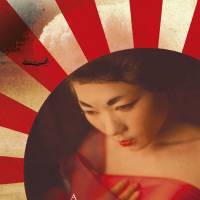Nagasaki is a popular setting for novels about Japan. During the years when Japan shut itself off from the world, the port town became a door left ajar, and some of the appeal for novelists is the enduring frontier myth the city has cultivated, with its easy blend of East and West.
The Nagasaki in Jackie Copleton's debut novel, "A Dictionary of Mutual Understanding," is a lost city — one that disappeared on Aug. 9, 1945, the day it was bombed.
Amaterasu Takahashi's daughter, Yuko, and grandson, Hideo, died when the atomic bomb exploded above Urakami Cathedral. Unable to come to terms with the loss, she escapes the devastated city with her husband, Kenzo, eventually settling on the East Coast of America. Now an old widow with little but whiskey for company, she is forced to retread the pathways of her memories when a man arrives at her door claiming to be her grandson, Hideo.
Copleton has clearly done extensive research, and prewar Nagasaki comes alive in the well-observed descriptions and sensual prose. The salty scent of the sea is vivid, as are the colors of the kimonos in the city's pleasure quarter. The vitality of the world she conjures serves to highlight the brutality of the war and the personal tragedies that Amaterasu must relive. The story she tells is heartbreaking.
The horror of the atomic bombing speaks for itself and it's to Copleton's credit that she avoids both sentimentality and didactic outrage.
By unravelling the twisted mass of causes that led Yuko to Urakami Cathedral at the moment the bomb detonated, Copleton allows the personal grief of an old woman to blossom into something more universal.



















With your current subscription plan you can comment on stories. However, before writing your first comment, please create a display name in the Profile section of your subscriber account page.